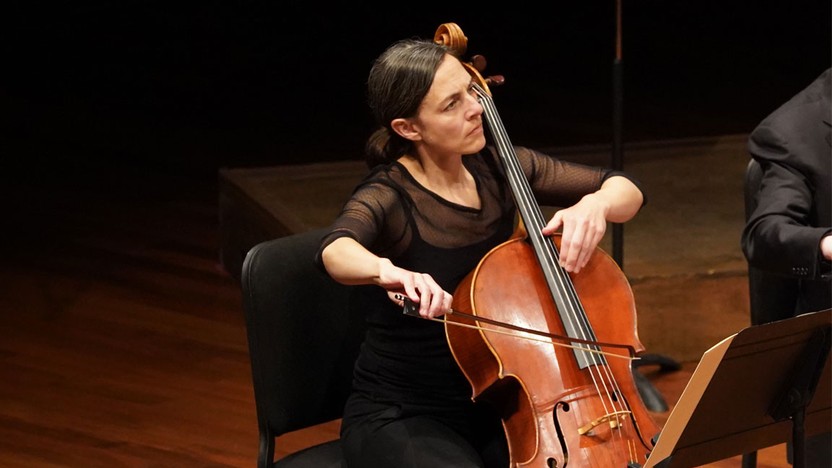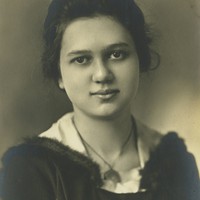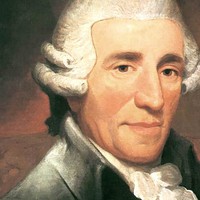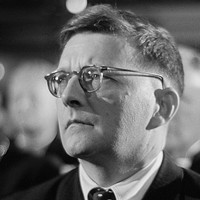Julie Albers Plays Haydn’s Cello Concerto in D



In her twenties, Ruth Crawford was a talented pianist and budding composer in Chicago who was championed by the avant-garde composer Henry Cowell. It was Cowell who introduced her to Charles Seeger, who started as her composition teacher and became her husband in 1932 after he left his family for her. As the mother to their four children (and the stepmother to Charles’ sons from his first marriage), Seeger put her family role ahead of her composing, and she produced barely any music in her thirties and forties, although she made important contributions to the preservation work of Alan and John Lomax, transcribing their legendary field recordings and arranging them for printed folksong collections that crystallized the American folk repertoire.
Determined to reignite her composing career once her children were more independent, Seeger wrote the Suite for Wind Quintet in 1952 for a competition that she ended up winning. Instead of a fresh start, the Suite sadly turned out to be her last composition; she was diagnosed with intestinal cancer and died the next year at the age of 52.
In the Suite for Wind Quintet, just like in her early works, Seeger developed her own compelling patterns of notes and rhythms that impart a sense of order in their repetitions and inner logic. The angular leaps and funky rhythms of the repeating ostinato in the suite’s first movement establish a tonal color that holds its character even as the materials compress and distort. Related procedures in the slow middle movement and very fast finale create a composite effect of music that is austere and unpredictable, and yet attractive on its surface and utterly unpretentious.
Aaron Grad ©2024
 Listen to Audio
Listen to Audio
In 1766, Prince Nikolaus Esterházy completed a sumptuous summer palace, Eszterháza, on the site of a former hunting lodge. The “summers” he and his entourage spent in the country eventually lengthened to ten months of each year, and the prince expected his Kapellmeister, Franz Joseph Haydn, to keep him well supplied with musical diversions. The composer acknowledged the impact of this obligation, once writing, “In Eszterháza I was forced to become original.”
Haydn’s Cello Concerto in D Major was a product of that fruitful environment. Prepared in 1783, it featured the talents of Anton Kraft, principal cellist of the Esterházy court orchestra from 1778 to 1790. Kraft studied composition with Haydn, and scholars long believed that the cellist had composed the concerto himself, until a signed autograph copy discovered in 1951 confirmed the music as Haydn’s. The solo part is far more demanding than Haydn’s other surviving Cello Concerto, from the 1760s, so we can presume that Haydn factored in Kraft’s abilities and perhaps consulted directly with him.
The Allegro moderato first movement begins with a relaxed exposition for the orchestra. When the cello enters with the melody, the violins harmonize from below; for the second main theme, the violins again join the cello, this time with an upper harmony. These harmonized melodies come straight from the realm of opera, the genre that occupied most of Haydn’s time in that period. In this concerto, the solo cello makes the most of its wide range to play all the roles, from the profound bass to the coquettish soprano.
The Adagio is an intimate rondo, its stately music coaxed along by quick notes in the accompaniment. For the first statement of the theme, and again in one of its returns, only violins and violas accompany the solo cello, imparting a special delicacy to the texture. As in the first movement, the finale begins at a gentle piano dynamic, withholding the impact of a forte arrival. Haydn’s legendary humor animates this movement, with breath-catching holds between phrases, extreme changes in range, and an unexpected detour into the minor mode.
Aaron Grad ©2024

By 1964, when Dmitri Shostakovich composed the String Quartet No. 10 at a composer’s retreat in Armenia, his life was as settled as it had been in decades. He had recently married for the third time, a decade of “thaw” under the political leadership of Nikita Khrushchev had brought his music back to the fore in Soviet society, and the health problems that would plague his final decade had not yet accumulated.
The Tenth Quartet — or the variant heard here, an authorized adaptation for string orchestra by the Russian conductor and violist Rudolf Barshai — is a far more congenial work than, say, the Eighth Quartet, composed four years earlier in a nearly suicidal state of despair. The restrained Andante tempo and passing triads of the opening movement exude a quiet comfort, and the scherzo that follows gives the sense that its furioso antics, intense as they are, mean no harm.
A subtle thematic link, with the first phrase of the Adagio picking up a motive still ringing from the preceding movement, helps smooth a path for the stately unfurling of a passacaglia, an archaic form that evokes grounding and constancy. The Allegretto finale tiptoes in over the last wisps of the slow movement, and the quiet strains linger and develop into broad counter-themes that offset the nimble, dancing motives. The movement makes only one sustained push at full intensity, otherwise preferring a hushed demeanor laced with nostalgic recollections of earlier music.
Aaron Grad ©2024
Get driving directions and find nearby parking.
Find dining options close to the venue.
View seating charts to find out where you'll be seating.
Get driving directions and find nearby parking.
Find dining options close to the venue.
View seating charts to find out where you'll be seating.
